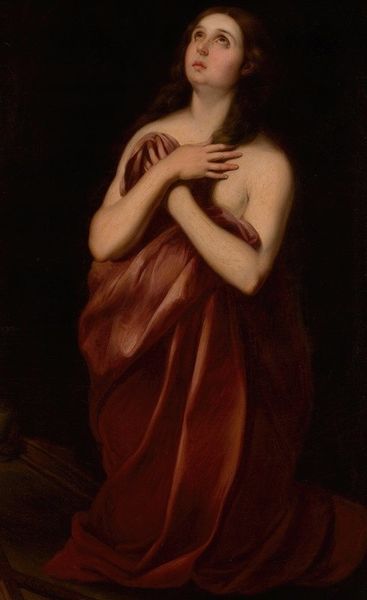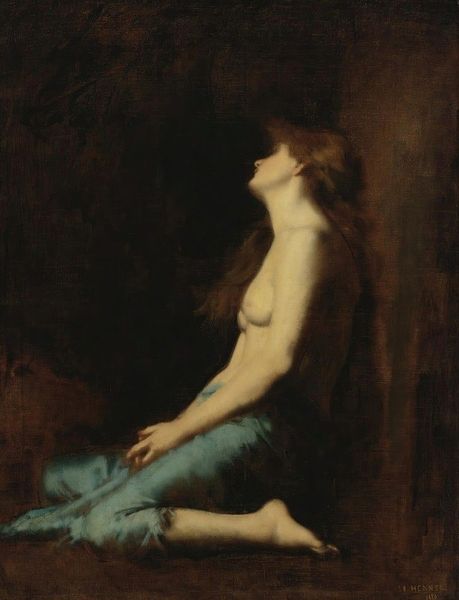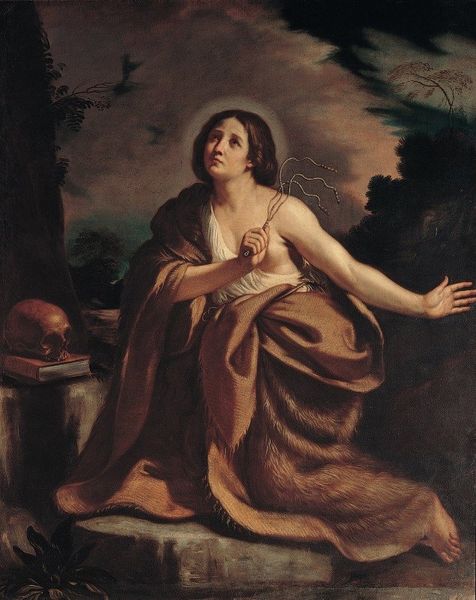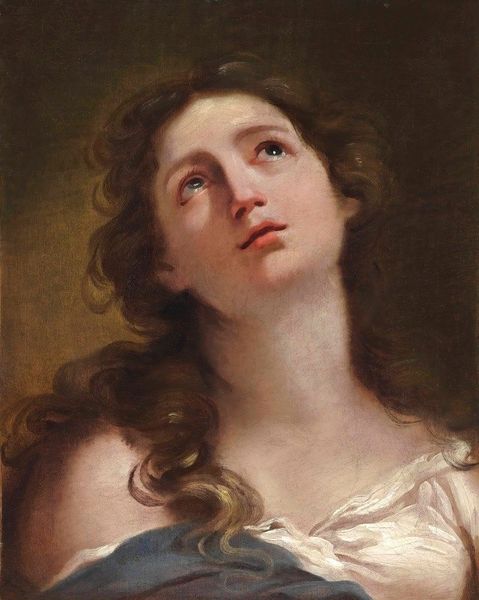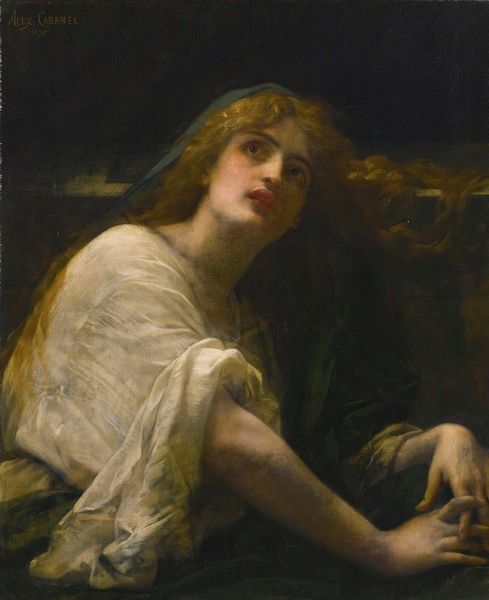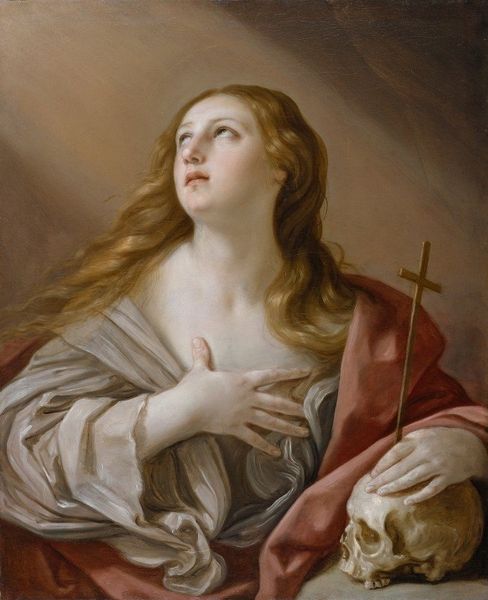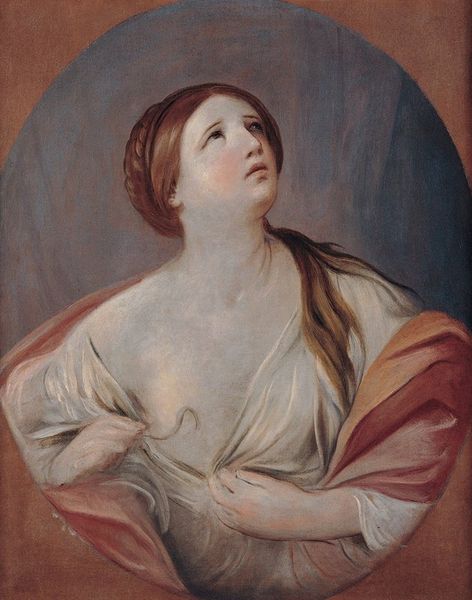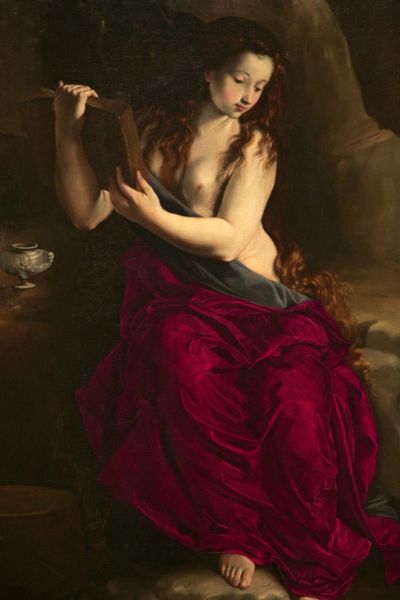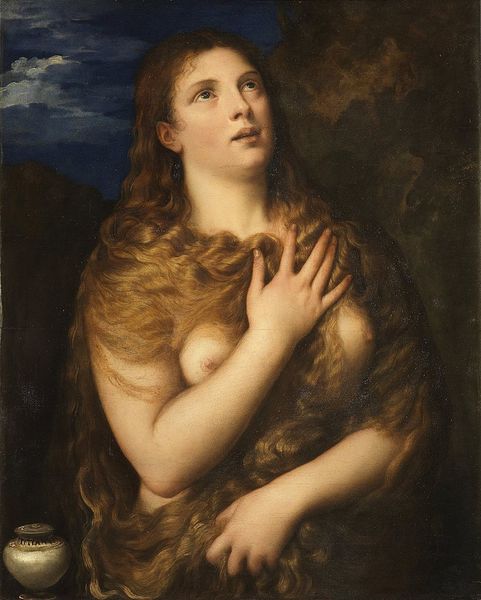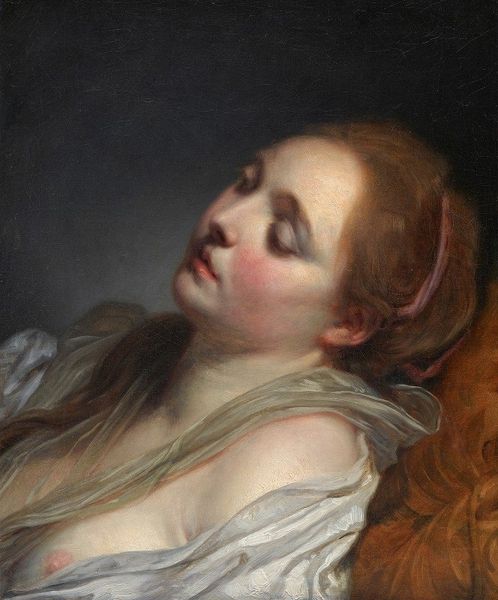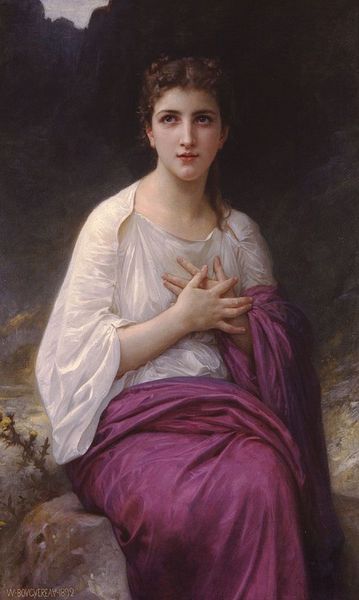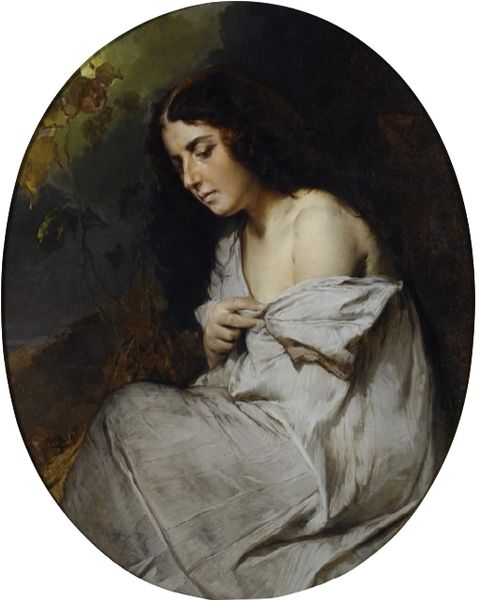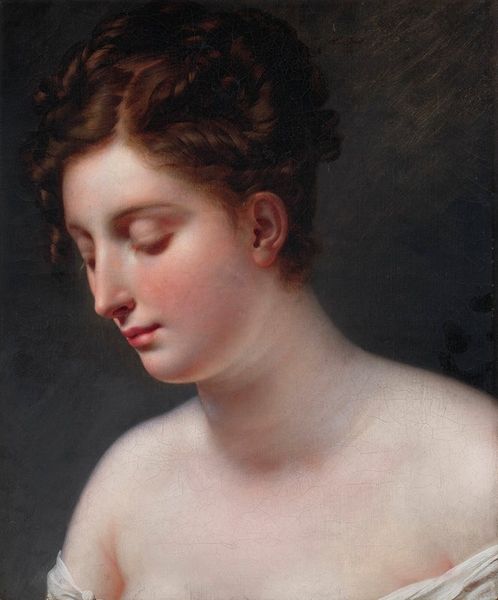
painting, oil-paint
#
portrait
#
allegory
#
narrative-art
#
baroque
#
painting
#
oil-paint
#
vanitas
#
chiaroscuro
#
history-painting
#
academic-art
Copyright: Public Domain: Artvee
Bartolomé Estebán Murillo painted this image of the Penitent Magdalene, a symbol of repentance, perhaps in the 17th century. See how Murillo uses the skull, book, and upturned gaze as dominant symbols, each steeped in cultural meaning. The skull, a memento mori, reminds us of mortality. The book signifies sacred knowledge and reflection, while the upturned eyes invoke divine communication. The Magdalene’s pose, with hands clasped in prayer, echoes gestures found in ancient sculptures and religious iconography across cultures, each communicating devotion and supplication. Consider the motif of upward-looking eyes, reminiscent of ancient depictions of ecstatic experience. This same gaze appears in Bernini's Saint Teresa in Ecstasy, conveying intense emotional states. The eyes are windows to the soul, capturing the Magdalene's profound spiritual awakening, a symbol of collective memory and the subconscious search for redemption. The Magdalene's story of transformation continues to resonate, resurfacing through time, forever capturing our subconscious desire for change.
Comments
No comments
Be the first to comment and join the conversation on the ultimate creative platform.
